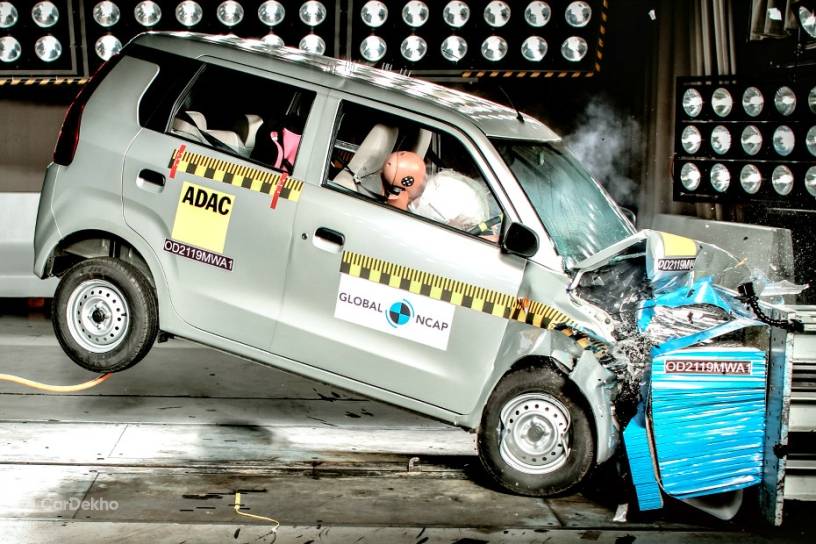Maruti WagonR Scores Poor 2-Star Crash Test Rating
Modified On Oct 31, 2019 05:01 PM By Raunak
- Write a comment
The body shell integrity of the latest generation Maruti Suzuki WagonR was rated unstable by Global NCAP
- Global NCAP tested the base variant of the WagonR sold in India.
- Received poor 2-star adult and child protection ratings.
- WagonR only offers a driver airbag as standard.
- Passenger airbag and front seatbelts with pretensioners and force limiters are optional.
- Body shell of the WagonR was rated as unstable.
- Tata Nexon remains the only made-in-India car tested by Global NCAP to get 5-star rating.

The Global New Car Assessment Programme (Global NCAP) recently tested a few made-in-India cars, including the Maruti Suzuki WagonR, in the sixth round of the #SaferCarsForIndia campaign. There, the hatchback scored a poor 2-star rating for both adult and child protection.
Global NCAP tested the base variant of the WagonR, which sadly offers neither a passenger airbag nor front seatbelts with pretensioners and load limiters as standard equipment. While you can add these features under the optional package for a Rs 7,000 premium, the bodyshell integrity of the WagonR will remain unstable as tested.
As with all Global NCAP tests, the WagonR was crash tested at 64kmph. However, its body shell was not capable of withstanding higher speeds. This doesn’t come as a surprise as the body shell integrity of all the Marutis tested by Global NCAP, except for the Vitara Brezza, were rated unstable. Even the latest-gen Swift, which also scored a dismal 2 star rating, was rated the same.
Adult protection test results:
Good: The Driver and Passenger’s head, Driver’s neck Adequate: Passenger’s neck Marginal: Driver and Passenger’s knees Weak: Driver and passenger’s chest Poor: None

Child protection test results:
It scored 2 stars for child protection. There’s no 3-point belt for the middle passenger and it does not offer ISOFIX child seat anchorages as well. The child seat for the 3-year-old, installed facing forward with an adult seatbelt, was not able to prevent excessive forward movement during the impact. In fact, the 3-year-old child restraint system (CRS) failed during the test. The 18-month-old CRS, which was also installed using the rearward facing adult seatbelt, provided good protection for the head but was still vulnerable for the chest.
Read More on : Wagon R AMT















